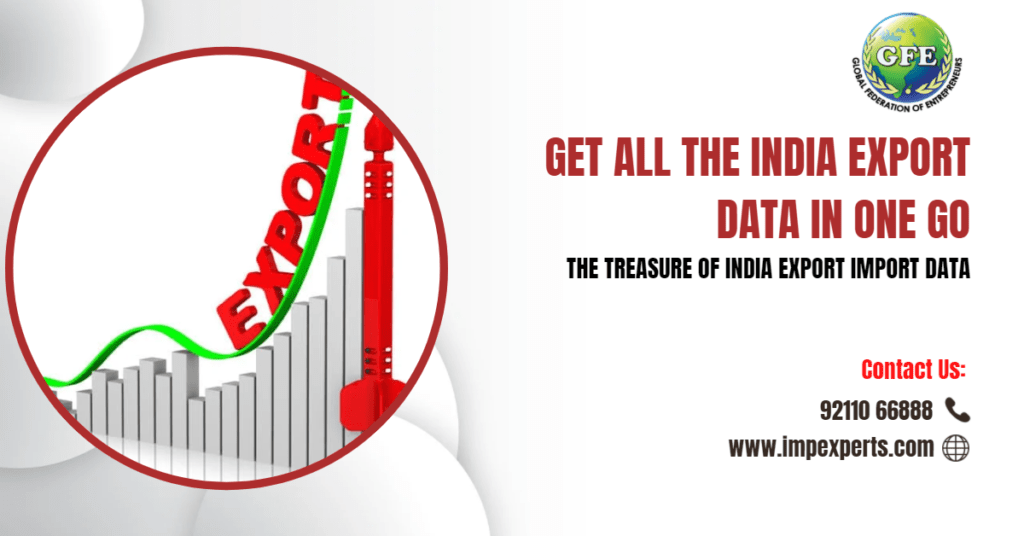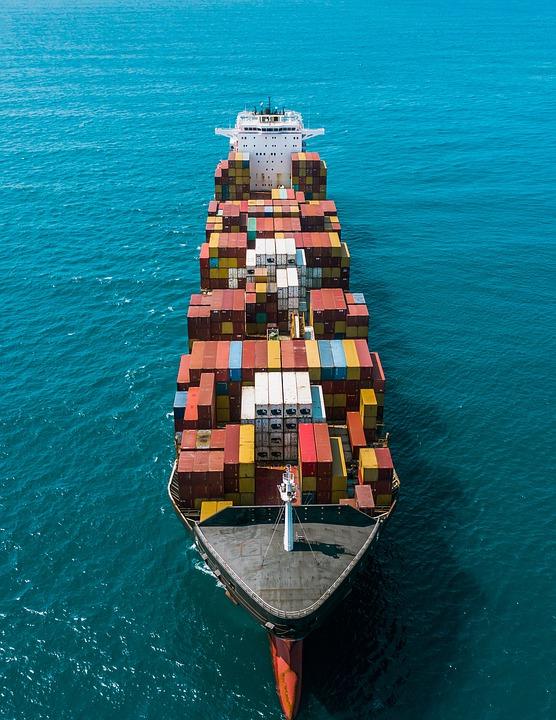Quick Summary:
Have you decided to start a new import-export business this year? If you have, you need to understand the importance of research because your import export business growth is based on data.
So for your concern today, in this article, we have provided complete information on India export import data, including the importance of import-export data of India and the benefits of India export import data year wise, so are you ready to dive into this global import export data provider blog post?
Overview of Import Export Data of India
History About Indian Import Export
Egypt, Europe, Iran, and China were trading partners with ancient India. India joined the Commonwealth of Nations after gaining independence from the British in 1947. However, the country’s economy was closed. Therefore, the government kept a close eye on imports and exports.
After globalization in 1991, India’s economy started to open up. There has been no turning back since. India joined the World Trade Organisation in 1995 and the Group of 20 in 1999. India has trade relations agreements with many trade blocs, including the EU, ASEAN, and EFTA. According to India export import data bank, foreign trade was contributing 40.2% of GDP.
Import-export data of India gets collected from customs ports centers across the country. Importers, exporters, suppliers, logistics, forwarders, investors, and government agencies benefit from import export data India. The India export data and India import data include the following information:
- Arrival Date
- Contact details and consignee
- Origin country
- HS Code and product description
- Contact details and shipper
- Total price and unit price in INR and USD
- Quantity
- Shipment mode
According to India’s export-import data, total exports in 2019 were 322.8 billion USD. In 2019, India imported 480 billion USD. Therefore, India had a trade deficit of 189.69 billion USD in 2019. In September 2020, India’s import-export data 2020 deficit was 2.7 billion USD. From April to September 2020, the India import-export data 2020 deficit was reduced to 20 trillion USD.
Export data from India increased to 27.58 billion USD in September 2020. Exports recovered the most quickly after the pandemic. Exports counted 27.4 billion USD in February 2020. As per historical data, the highest export data from India were recorded in April 2008. April 2020 saw the lowest level of goods exports. The following were the top exports in 2019:
- Mineral fuels, including oil, are 44.1 billion USD
- Gems, precious metals is 36.7 billion USD
- Machinery, including computers, are 21.2 billion USD
- Organic chemicals are 18.3 billion USD
- Vehicles are 17.2 billion USD
According to India import-export data 2020, imports totaled 30.3 billion USD in September 2020. After the pandemic, imports showed signs of recovery. In February 2020, imports before the lockdown totaled 37.3 billion USD. According to historical India export import data India, the greatest imports in India were recorded in March 2010. Resource imports were at their lowest in April 2020. The following have been the top imports in 2019:
- Mineral fuels, including oil, are 153.5 billion USD
- Gems, precious metals are 60 billion USD
- Electrical machinery, equipment is 50.4 billion USD
- Machinery, including computers, is 44.1 billion USD
- Organic chemicals are 20.5 billion USD
Looking for the most accurate import-export data for your business? We are the solution you are looking for! Get in touch with us Now!
What is Export-import Data Bank and How It Can Help with India Export Import Data?
The private and public sectors use Export-import Data Bank to collect India export import data year-wise on a specific import-export trade. Moreover, it generates India export import data year-wise on the international market in reply to a highly public request. Its global use has increased in recent years.
It provides many benefits to people and helps in the growth of their businesses. Therefore, its importance is growing by the day. The question that comes to mind is why people depend on this data bank. That is because every company, or every startup institution, requires some market statistics.
To resolve these issues and make the best decision, they require someone who can respond quickly. Therefore, the Export-Import Data Bank is a godsend for them. It is a data source platform that is available online. It creates a database of export-import transactions. The source’s output is 100% accurate. It is a safe and secure online platform.
It helps to simplify our decision-making process when starting a business and inspires the customer to make the right decision on the right path. Each country has at least one public organization that serves as an import-export data bank.
Such organizations provide a better path for the transmission of goods from one country to another, make rules for the transfer of goods, and provide a smooth path for exporting or importing goods. For example, The Directorate General of Foreign Trade is a public export-import bank.
Every trader in the foreign trade business whose primary goal is to make a profit before the rest of the factors matter. As we all know, each country has its own set of rules for importing and exporting goods.
India is a developing country that imports and exports millions of products. India was ranked 18th in exports and 14th in terms of imports. India imports and exports millions of different types of products.
India has given many opportunities to the user to India export import data. But to get the opportunity to start up any business, you have to enter the Indian market. And entering the Indian market is not easy. So you have to have some knowledge about the static figure of what is going on in the running market.
You must fund an authentic and trustworthy source tool, Export Data Bank. In addition, before starting a business in another country, you should be familiar with the terms and conditions of that country and the current market situation.
Looking for a new opportunity in your career? Here is the good news for every student, businessman, housewife, and entrepreneur who wants to build a startup. Learn Import Export Business Steps and set up your import export business!
The Things That Get Covered in India Export Import Data
In 2019-20, India’s export data represented 528.45 billion USD, while imports were 598.61 billion USD. According to the India export import data, imports accounted for 2.6% of global imports, and exports accounted for 1.7% of global exports. Therefore, export data from India accounted for 19.74% of GDP, while imports accounted for 23.64%.
According to the Ministry of Commerce & Industry India, India’s exports in February 2022 increased by 25.41 percent to USD 57.03 Billion over the same month last year. Moreover, overall exports (Merchandise and Services combined) in April-February 2021-22 shoot up by 36 percent to $ 601.77 billion over the same period last fiscal while total Merchandise Exports in April-February 2021-22 soar close to $ 375 Billion, Total Services Exports during current FY go past $ 226 Billion.
India export import data year-wise is collected from various customs offices, port authorities, shipping companies, and trade authorities. The following are the major import-export data of India points covered in India import-export:
- Product Description with HS Code
- Importer Name
- Exporter Name
- Value
- Total Quantity and Unit Quantity
- Port and destination country
- Origin country and port
- Transportation mode
According to India import-export data, exports fell to 23430 USD million in November, while imports increased to 33600 USD million. The largest exports after the lockdown occurred in September when 27580 USD million were exported, and the largest imports occurred in October when 33600 USD million were imported. India generally has a large trade deficit, but in October 2020, the trade deficit was reduced to USD 8.71 billion.
Two Database Types of Import Export Data of India
Foreign trade is split into 2 parts: imports and exports of goods and services. Exports are the sales of goods and services produced in India, whereas imports are the purchases of goods and services produced in other countries. In 2017, foreign trade accounted for 48.8% of India’s GDP.
Domestic policy and international market conditions influence the percentage of the trade. A country’s trade statistics can reveal information about its main imports and exports, the countries with which it trades, its tariff structure in terms of duties, and the most favored nations it conducts business with.
Trade import data can be found in two types of databases:
Macro import data
Every quarter, the government publishes Macro Import Data, including the total quantity imported for each HS Code.
Micro import data
Each shipping manifest documented in the customs department is detailed in micro import data. It contains data about each bill of entry. Detailed product information, total and unit prices for each shipment, and the name and contact information for the importer and exporter.
Benefits of Leveraging Export Data of India
- Importers and exporters can gather real-world data to help them plan their businesses.
- They can research new markets in which to sell or source their materials.
- It helps traders in assessing the pricing strategy of their competitors.
- They can also discover more about the market leader’s business strategy.
- Rather than contacting suppliers, businesses can receive raw materials directly from importers.
- The monthly, quarterly, and annual data assists traders in making more accurate projections. The trader can sell and buy in more precise amounts without increasing inventory.
- The data assists them in analyzing customer preferences and forecasting trends.
- Contact details for exporters and importers can help traders search for potential clients or sellers.
Ask Impexperts For The Most Reliable Export Data
Are you thinking of starting an import-export business? You can get in touch with GFE- Impexperts, where we provide the most accurate India export import data to all those who want to study the market before starting their business.
Reach out to impexperts to get the detailed Indian Import Export Data with the highest accuracy and learn more about the broad array of chances available in the import-export business!
Get a one-stop solution for every Import-export-related question, and unlock the doors to thousands of global opportunities waiting for you, Today!
FAQs
1. Who is the No 1 exporter in India?
Ans. The United States is the no.1 exporter partner.
2. What is India’s total export?
Ans. The total export value (FOB) is US$ 323,251 million. The total value of imports (CIF) is $478,884 million US dollars. At the HS6 digit level, there are 4,442 products exported to 226 countries and 4,356 imported from 210 countries.
3. Which items does India export the most?
Ans. Refined petroleum is the most exported item from India.
4. What does India export to the USA?
Ans. The export business has assisted the expansion of the Indian economy. Medical appliances, leather, textiles, and other major products are exported from India.
5. What does India import from Pakistan?
Ans. Mineral fuels and oils ($131.29 million), edible fruits and nuts ($103.27 million), salt, sulfur, stone and plastering materials ($92.84 million), ores, slag, and ash ($17.18 million), and raw hides and leather ($16.27 million) were India’s top imports from Pakistan in 2018-19.
6. What does India import from Japan?
Ans. Machinery, iron and steel products, electrical machinery, transport equipment, chemical elements, plastic materials, manufacturers of metals, precision instruments, rubber manufactured, coal, and briquettes India import from Japan.
7. Where does India get its oil?
Ans. From the middle east, India gets its oil.



